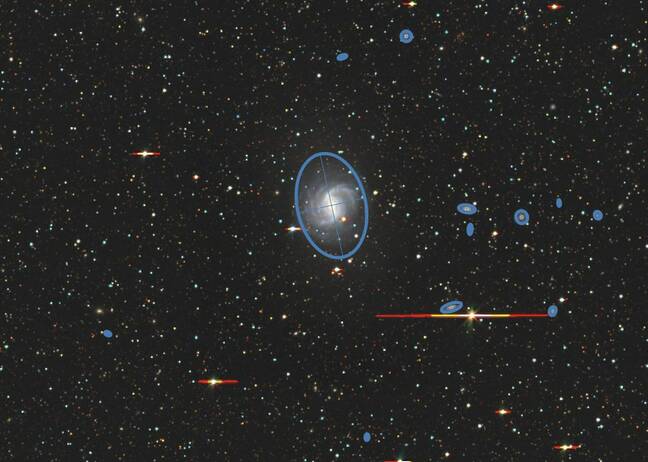It's full of stars! Galactic atlas catalogs 400k Milky Way neighbors
Public gallery invites you to have a scroll and wonder where the hours went
If you fancy a scroll among the stars, an atlas of nearly 400,000 of our galactic neighbors has been captured in new levels of detail and accuracy and is freely accessible to anyone wanting to get a new look at strange new galaxies.
Oh, and it might be useful for scientists, too.
The Siena Galaxy Atlas (SGA) consists of "multiwavelength optical and infrared" images, light profiles (the first galactic atlas to include such data, the team claims) and other observations on 383,620 nearby large galaxies. The atlas covers 20,000 square degrees, covering around half of the night sky.
"Previous galaxy compilations have been plagued by incorrect positions, sizes and shapes of galaxies, and also contained entries which were not galaxies but stars or artifacts," said astronomer Arjun Dey from the National Science Foundation's NOIRLab, whose telescopes were used for most of the measurements.
"The SGA cleans all this up for a large part of the sky. It also provides the best brightness measurements for galaxies, something we have not reliably had before for a sample of this size," Dey said.
It's worth visiting the massive interactive sky map to just zoom and pan a bit: There's a lot of stuff up there, and still only a fraction of it is identified and labeled.

A 10 arcminute selection fo objects from the SGA's map centered on galaxy NGC 5921. Cataloged items are circled in blue. - Click to enlarge
The data the SGA team used to build the atlas was collected over the course of three scans performed between 2014 and 2017 known collectively as the Dark Energy Spectroscopic Instrument (DESI) Legacy Surveys. NOIRLab's telescopes from the Cerro Tololo Inter-American Observatory in Chile and Kitt Peak National Observatory in Arizona, along with the University of Arizona's Steward Observatory, participated in the DESI surveys. Additional data from NASA's WISE satellite was also used.
As opposed to previous intergalactic atlases, of which there are plenty dating back to the 18th century, SGA's dataset comes from newer digital telescopes able to capture unprecedented levels of detail. SGA also benefits from modern computer analytics and machine learning capabilities, like a point-spread function known as "The Tractor" that was used to combine infrared and optical images "and a family of two-dimensional galaxy models to forward-model the observed pixel-level data," the team said in an accompanying paper. Other processing was performed to further remove noise and build full-field mosaics for each galaxy, hopefully with a minimum of distortions and warping.
A local universe of galaxies to explore
"Nearby large galaxies are important because we can study them in more detail than any other galaxies in the universe; they are our cosmic neighbors," said Siena College physics professor and SGA project lead John Moustakas.
- Three billion objects, 10TB+ of data – yup, it's the largest-yet survey of our galaxy
- First-ever James Webb Space Telescope image revealed
- Scientists shed light on oddball gamma rays from deep space
- Most distant observed star is blue – and it isn't alone
The hope is that the SGA can be used by astronomers to spot patterns across populations of various objects, analyze so-called "transient" objects that only appear for a short time, better understand galactic physics, and even expand our knowledge of the connections between galaxies and their mysterious dark matter halos.
Speaking of dark matter, SGA may also help astronomers understand the distribution of galaxies and their relationship to the spread of that unknowable stuff that is believed to make up the majority of the universe.
"The public release of these spectacular data contained in the atlas will have a real impact not only on astronomical research, but also on the public's ability to view and identify relatively nearby galaxies," said NSF Program Director for NOIRLab, Chris Davis. ®
 Biting the hand that feeds IT
Biting the hand that feeds IT